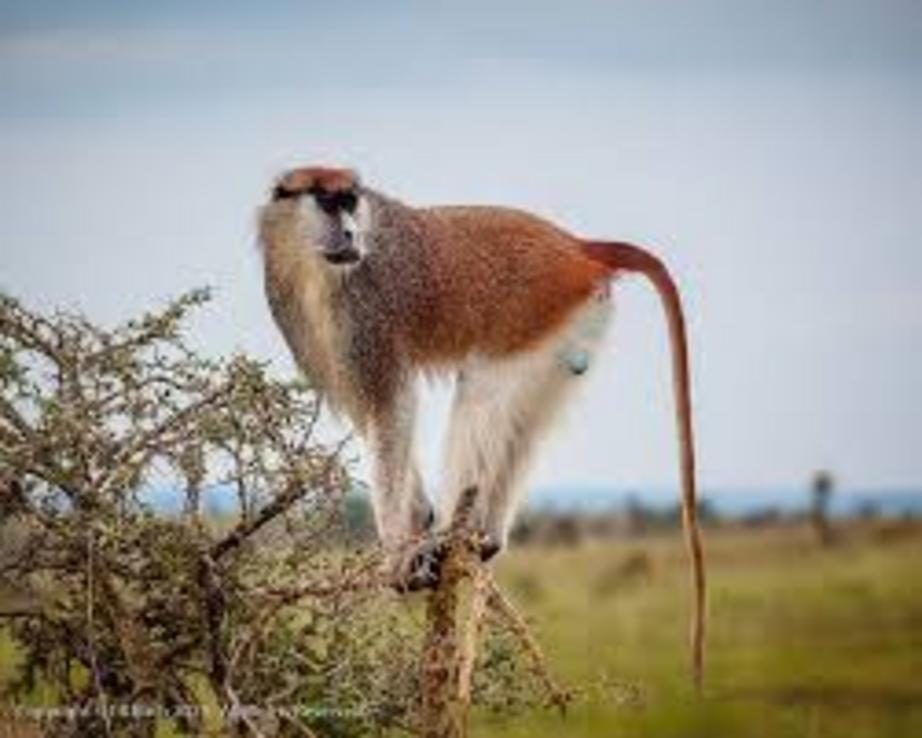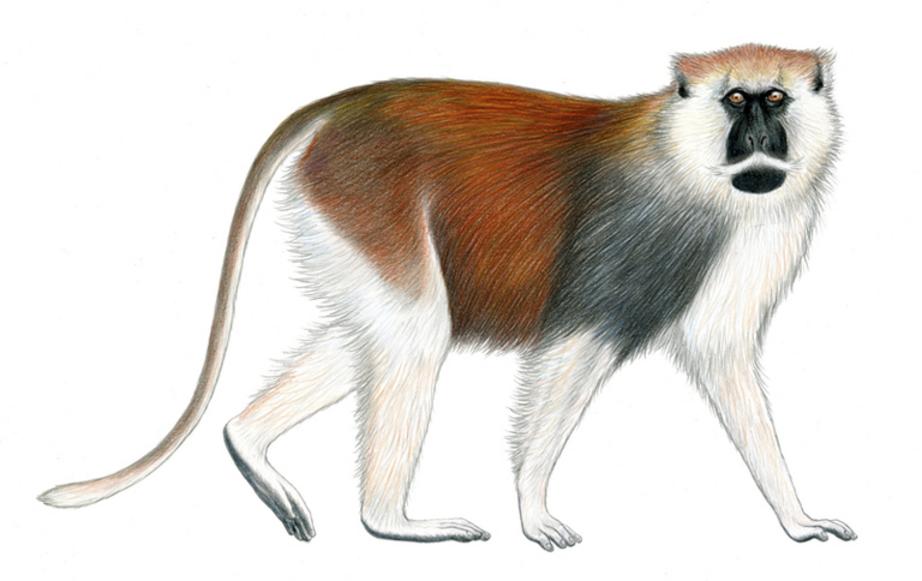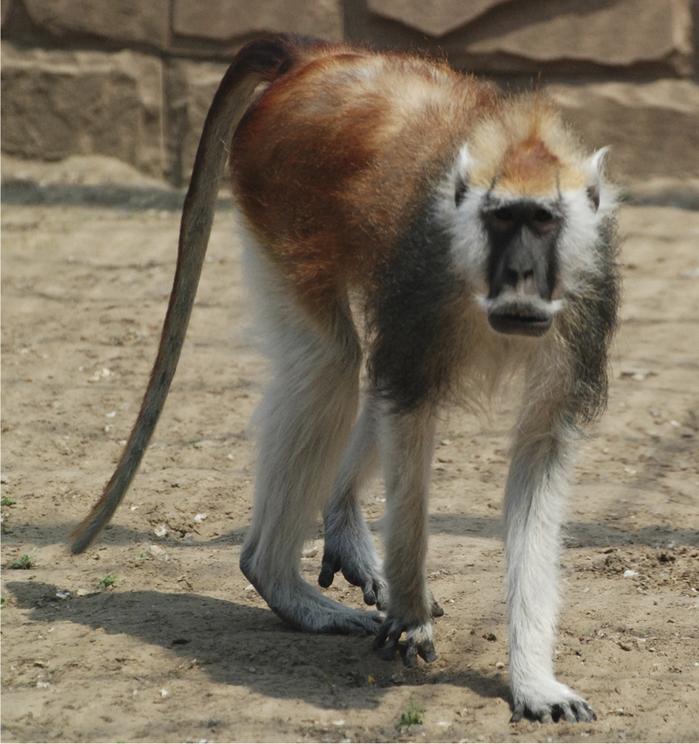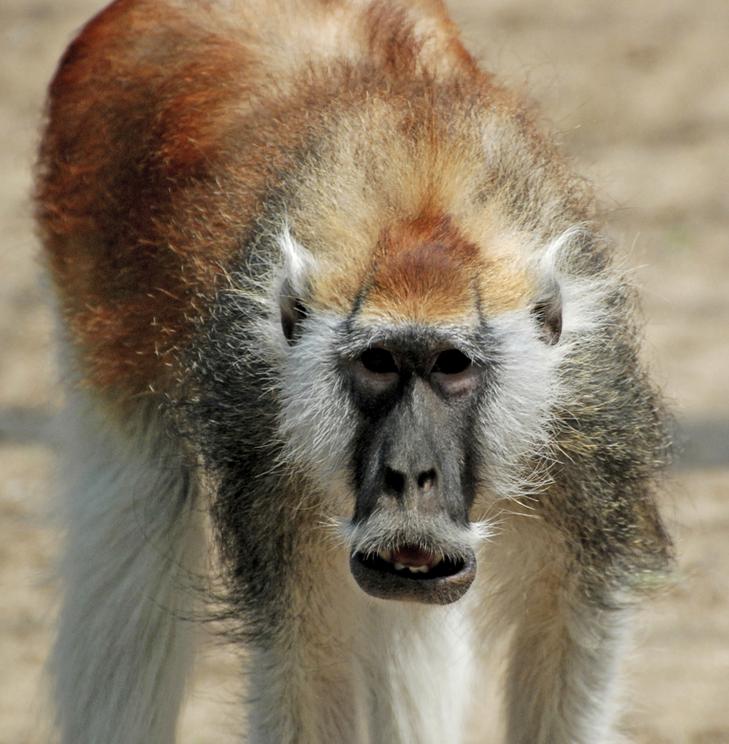150 years after being discovered, African monkey with handlebar moustache becomes its own species
The Blue Nile patas monkey is found in the Blue Nile basin of Ethiopia as well as in eastern Sudan. Its range is geographically distinct from that of other patas monkeys, as Sudan’s Sudd swamp region and the Ethiopian highlands isolate the Blue Nile patas in the extreme northeast end of patas monkeys’ known distribution range.
Patas monkeys are ground-dwellers and the fastest runners amongst all primates, capable of reaching more than 30 miles per hour. They were, up until now, considered to be one species, Erythrocebus patas — the only species within the genus Erythrocebus. Or at least it was the only recognized species in the genus until Erythrocebus poliophaeus, the Blue Nile patas monkey, was recently elevated to full species status by Spartaco Gippoliti, a scientist with the IUCN SSC Primate Specialist Group.
The Blue Nile patas monkey has a black face and nose as well as a tuft of fur below its nose that looks distinctly like a white handlebar moustache. The species does not, however, have the band between ears and eyes that is characteristic of other patas monkeys.
Gippoliti wrote in a recent study published in the journal Primate Conservation that “New data on the distribution and physical appearance of patas monkeys in Ethiopia, together with a review of the old taxonomic literature, allows to us disentangle some questions concerning the taxonomy of Erythrocebus in northeast Africa.”

Patas Monkey - Murchison Falls NP, Uganda by John
The Blue Nile patas monkey was first described and given the name Erythrocebus poliophaeus in 1862. But a taxonomic revision of Erythrocebus was done in 1927, and it was erroneously determined at that time that the genus was monotypic, meaning it consisted of just one species.
According to Gipolliti, “Given the huge distributional range of Erythrocebus, it seems unlikely that the current monotypic classification describes the diversity of the genus correctly, all the more since other savannah dwelling African primate genera, such as Papio and Chlorocebus, comprise multiple species.” Even in 1927, there were enough differences observed among various populations of patas monkeys that three subspecies were identified — and a fourth subspecies was added in 1950.
In 2008, the IUCN assessed Erythrocebus patas as a monotypic genus with no subspecies and classified it as a species of Least Concern. This was “undoubtedly the result of the deficient current taxonomy, the ample geographic range and the scarcity of research,” Gippoliti writes in the study. “Further, savannah primate species are generally believed to be less at risk than forest primates, but this is clearly an oversimplification that may be encouraged by an excessively-lumped alpha taxonomy.”
Gippoliti adds that, though the results are still unpublished, Erythrocebus patas was reassessed as Near Threatened by the IUCN in 2016. The conservation status of the three subspecies initially recognized in 1927 were also assessed, for the first time ever. Erythrocebus patas patas was found to be Near Threatened, E. baumstarki to be Critically Endangered, and E. pyrrhonotus to be Vulnerable.

Blue Nile Patas Monkey (Erythrocebus poliophaeus). Illustration by Stephen Nash
Gippoliti notes in the study that Erythrocebus poliophaeus is threatened by habitat loss, and that while we still know very little about the extent of its range, the species’ distribution is “certainly limited” and therefore “the species is a cause for conservation concern.” But Gippoliti also argues that, now that it’s been established as taxonomically distinct, the monkey could serve as something of a flagship species to help spur the conservation of the wildlands of Ethiopia and Sudan.
“Refining the taxonomy of the patas monkey was particularly rewarding for two main reasons,” he said in a statement. “The basic concept of the genus Erythrocebus was unchanged for about 100 years now, and the discovery of a distinct species living in eastern Sudan and western Ethiopia will put in the spotlight a little-known region of Africa, offering opportunities for new conservation projects in the area.”
Gippoliti detailed his findings in an issue of Primate Conservation published at the end of 2017. The Blue Nile patas monkey is just one of several discoveries reported in that issue. Among the others is Grove’s dwarf lemur, found in Madagascar, and two new species of tarsier found on the Indonesian island of Sulawesi.
Anthony Rylands, primate conservation director for Global Wildlife Conservation, also serves as deputy chair of the IUCN SSC Primate Specialist Group, which publishes the journal Primate Conservation. He said in a statement that “Patas monkeys occur west to east across sub-Saharan Africa, and there is notable variation in these remarkable primates. It’s only through this kind of painstaking research that we get a proper handle on their diversity so that we can more effectively protect these species from the threats they face.”

Adult male Blue Nile Patas Monkey (Erythrocebus poliophaeus), Beijing Zoo. Photo courtesy of Jonas Livet.
For full references please use source link below.

